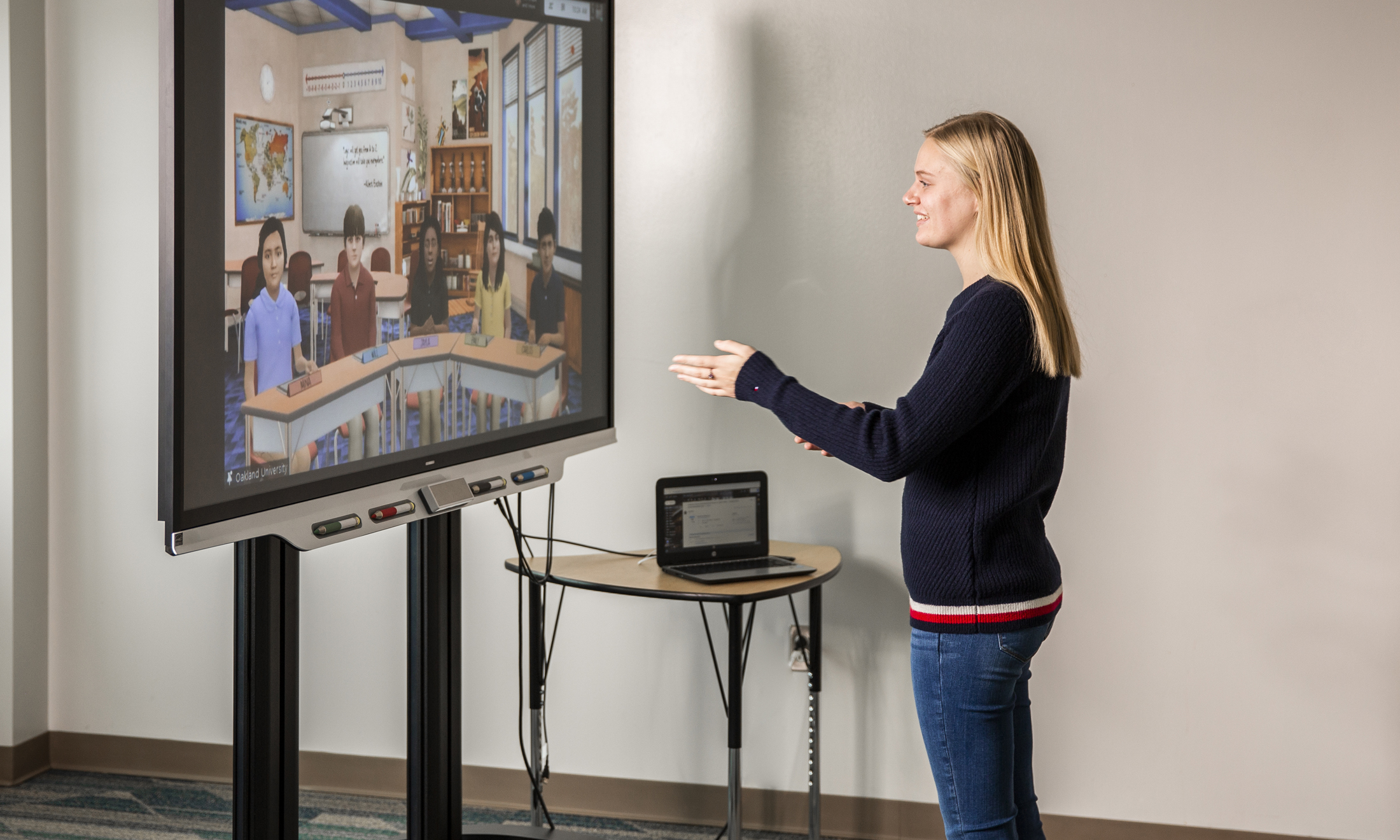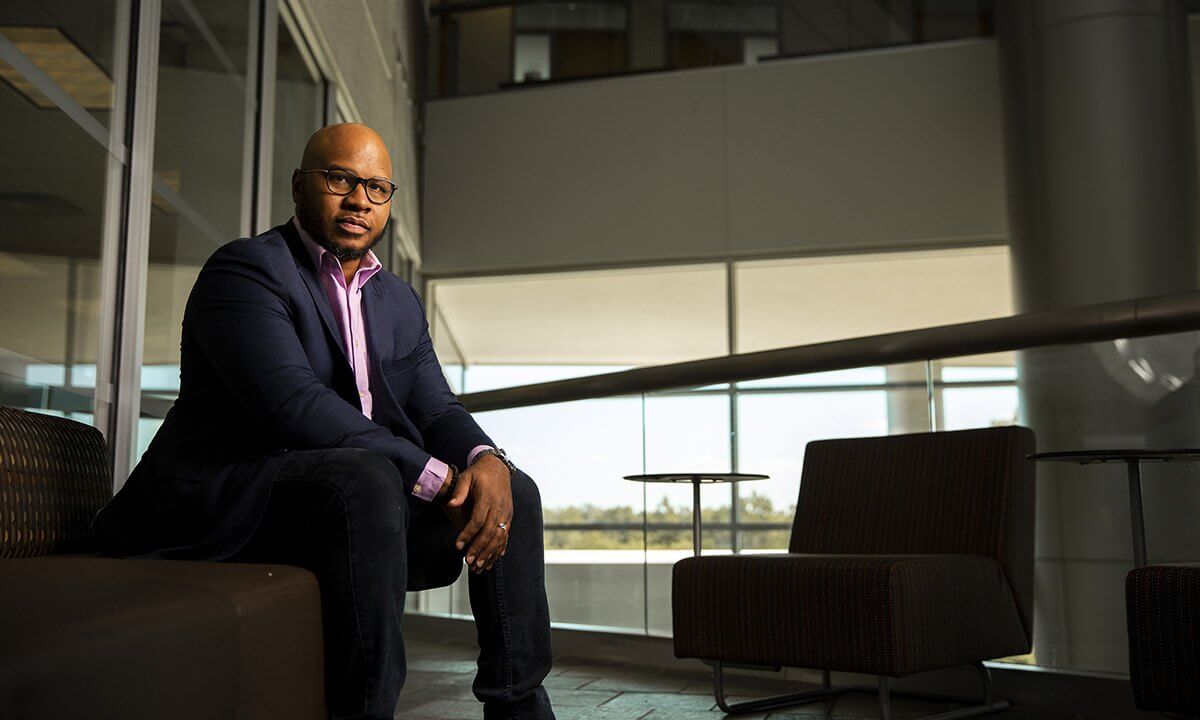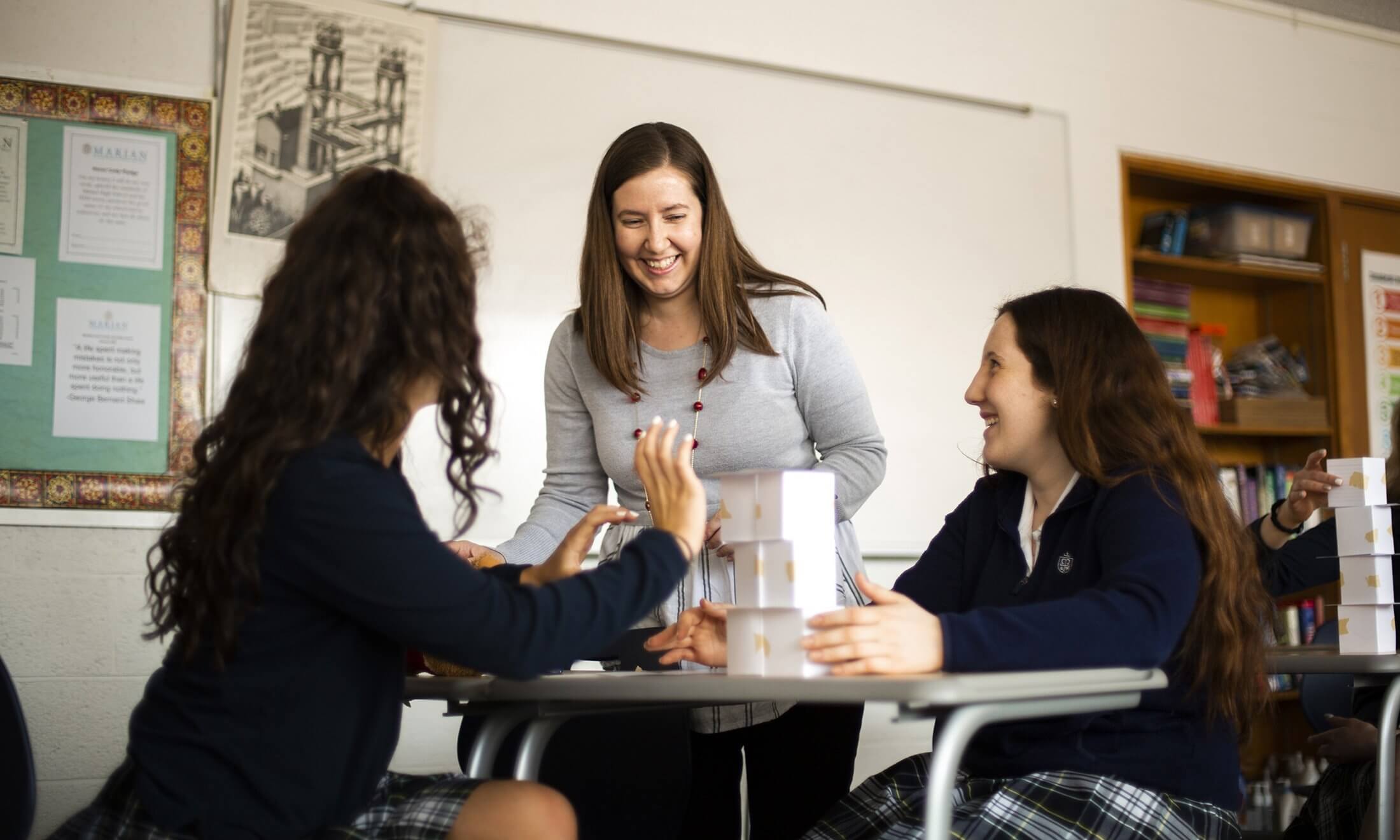SEHS Explores New Cross Reality Software for Field Experience Coursework
Teacher Development and Educational Studies professors integrate Mursion simulation software into classes.
When virtual and augmented reality (collectively known as XR) first became prominent in the 1990s, they were primarily utilized for gaming and entertainment purposes. Decades later, the popularity of this technology, which allows users to immerse themselves within a computer-generated environment, has expanded rapidly, shifting into fields such as marketing and education.
Educators at Oakland University’s School of Education and Human Services are now following this trend with the implementation of Mursion, a new software application that could effectively change the way in which students approach their career preparation coursework.
“The purpose of the Mursion simulations is to provide teacher candidates and school counselors in training with opportunities to rehearse high leverage practices that are critical to helping students learn important content in ways that lets them know that their ideas are interesting and valued,” said Dawn Woods, assistant professor of Teacher Development and Educational Studies (TDES).
The software utilizes virtual student avatars, computer animated characters that are designed to exhibit the behaviors of typical students, each with their own distinct personality. The simulations give teacher candidates (TCs) and school counselors-in-training (SCITs) the opportunity to interact with these characters, as a means of building their skills for teaching or counseling. The avatars respond to users in real-time, ensuring that each Mursion session is a unique and meaningful experience for the user.
Mursion has proven to be beneficial for students, primarily because it allows them to develop high-leverage practices, such as eliciting and interpreting an individual student’s thinking; leading a group discussion; explaining and modeling content, practices and strategies; and building respectful relationships with students. The simulations have been designed specifically for OU students, who work with faculty members to partake in and reflect on their experiences within the simulation.
“These mixed reality simulations mitigate the risk to others — for example, students in Pre-K–12 schools and mentor teachers — since TCs and SCITs can learn to carry out the high-leverage practice before enacting it in the real-world with real students,” Woods said.
During the Fall semester, 154 SEHS students participated in Mursion simulations in one or more of their courses. The Winter semester will see 184 additional SEHS students experiencing the Mursion platform.The software is being provided in select SEHS courses as part of a one-year pilot program supported by grant funding.
Student feedback has been largely positive, with many recognizing the potential long-term benefits of implementing the Mursion software into the education curriculum.
“Well done piloting and bringing such a beneficial practice to the teacher preparedness program at Oakland,” said Julie Molnar, a student in the Master of Arts in Teaching in Elementary Education (MATEE) program. “Mursion was definitely a good experience, and the type of experience that I have always wanted before I am turned loose to teach on my own.”
Professors utilizing the software in their coursework have also responded positively. According to TDES Professor Tuf Francis, Mursion is “surprisingly authentic” and has allowed him and his peers to expand upon the experiences already being provided to future educators in their program.
“Before this experience, we have relied primarily on micro-lessons — college students roleplaying adults in the university class — or mini-lessons — having the candidate lead short snippets of a class session with students, like a 10-minute lecture,” he said. “While both of these models are helpful, they can be a bit contrived and, depending on the skill level of the candidate, can waste class time for students. Our work with Mursion has allowed us to utilize another dimension of practice that is more realistic than roleplay and gives candidates more practice to hone their skills before trying them out in classrooms.”
In addition to the educational benefits of the Mursion software, Woods said it has proven to be an effective way for TCs and SCITs to develop their skills while also minimizing concern about the spread of COVID-19 within schools.
“All of the students are able to access the simulations remotely,” Woods said. “So, they are not at risk for being exposed to COVID-19, nor do they put students and teachers at risk in schools.”
It remains unclear if Mursion will be a permanent fixture in the teaching and counseling curriculum at SEHS, but according to Dean Jon Margerum-Leys, it has certainly been advantageous for students whose hands-on learning opportunities have been reduced by the threat of the coronavirus.
“The pandemic created an urgency to use simulations for field experiences,” he said. “We hope that we will be able to move past the pandemic very soon, but it may be that we will have lasting improvements to the variety of experiences we can offer to our students.”
For additional information on the teaching programs available at OU, visit oakland.edu/teach.

 March 08, 2021
March 08, 2021
 By Trevor Tyle
By Trevor Tyle









